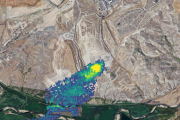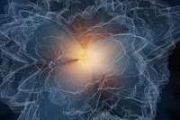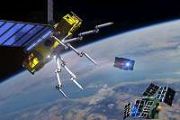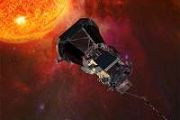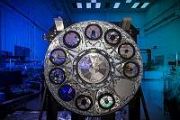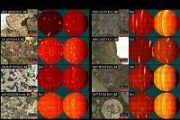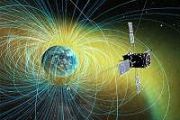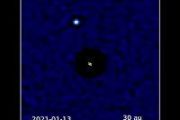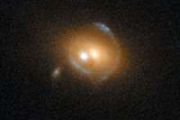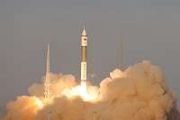
Copernical Team
Water ice detection campaign prepares lunar robots for Moon mission
 Researchers in Germany have conducted a campaign at the LUNA Analog Facility in Cologne to evaluate how water ice could be located and mapped on the Moon. Instruments and robotic vehicles were used in a simulated lunar environment with a substantial area covered in regolith material similar to Moon dust.
The Polar Explorer campaign at LUNA tested the mobility and sensing abilities of two r
Researchers in Germany have conducted a campaign at the LUNA Analog Facility in Cologne to evaluate how water ice could be located and mapped on the Moon. Instruments and robotic vehicles were used in a simulated lunar environment with a substantial area covered in regolith material similar to Moon dust.
The Polar Explorer campaign at LUNA tested the mobility and sensing abilities of two r Star Catcher achieves milestone for wireless energy delivery to Moon missions
 The lunar South Pole has gained attention from scientific and commercial sectors due to long-term exploration plans and its possible water ice deposits, which may enable future life support and fuel production. Deep craters in permanent shadow make this region a focal point for NASA's Artemis program and other international initiatives.
Recent technology demonstrations aim to overcome hars
The lunar South Pole has gained attention from scientific and commercial sectors due to long-term exploration plans and its possible water ice deposits, which may enable future life support and fuel production. Deep craters in permanent shadow make this region a focal point for NASA's Artemis program and other international initiatives.
Recent technology demonstrations aim to overcome hars Blue Origin's New Glenn Nails First Ocean Booster Landing
 Blue Origin's New Glenn rocket successfully made its way to orbit for the second time on Nov. 13, 2025. Although the second launch is never as flashy as the first, this mission is still significant in several ways.
For one, it launched a pair of NASA spacecraft named ESCAPADE, which are headed to Mars orbit to study that planet's magnetic environment and atmosphere. The twin spacecraft wil
Blue Origin's New Glenn rocket successfully made its way to orbit for the second time on Nov. 13, 2025. Although the second launch is never as flashy as the first, this mission is still significant in several ways.
For one, it launched a pair of NASA spacecraft named ESCAPADE, which are headed to Mars orbit to study that planet's magnetic environment and atmosphere. The twin spacecraft wil PLD Space expands rocket subsystem testing leadership in Europe
 PLD Space is now operating its Teruel Airport testing facility at maximum capacity, with over 155,000 square meters dedicated to rocket development. The company utilizes ten self-designed test benches for its MIURA 5 launcher, establishing the largest private rocket testing infrastructure in Europe and strengthening its vertical integration strategy.
Subsystem qualification for MIURA 5 pro
PLD Space is now operating its Teruel Airport testing facility at maximum capacity, with over 155,000 square meters dedicated to rocket development. The company utilizes ten self-designed test benches for its MIURA 5 launcher, establishing the largest private rocket testing infrastructure in Europe and strengthening its vertical integration strategy.
Subsystem qualification for MIURA 5 pro Leonids meteor shower: When and where to see the celestial show
This request seems a bit unusual, so we need to confirm that you're human. Please press and hold the button until it turns completely green. Thank you for your cooperation!
Press and hold the button
If you believe this is an error, please contact our support team.
185.132.36.159 : b658dd58-3fdd-4540-9075-21a0d4ff
NASA faces another shift in its leadership—and in its vision
This request seems a bit unusual, so we need to confirm that you're human. Please press and hold the button until it turns completely green. Thank you for your cooperation!
Press and hold the button
If you believe this is an error, please contact our support team.
185.132.36.159 : 015d3e25-ac54-42e6-8d00-c0651d85
How do you fire someone into the sun?
This request seems a bit unusual, so we need to confirm that you're human. Please press and hold the button until it turns completely green. Thank you for your cooperation!
Press and hold the button
If you believe this is an error, please contact our support team.
185.132.36.159 : ce62a32c-3032-4080-af70-e7f7c907
ESA investigates high-stakes Amazon tipping point

For decades, the Amazon rainforest has quietly absorbed vast quantities of human-generated carbon dioxide, helping to slow the pace of climate change. Recent evidence, however, suggests that this vital natural buffer may be weakening – though uncertainties remain.
To help close this critical knowledge gap, European and Brazilian researchers have gathered deep in the Amazon to carry out an ambitious European Space Agency-funded field campaign.
Sentinel-6B is launched
 Video:
00:01:45
Video:
00:01:45
Copernicus Sentinel-6B was launched on 17 November 2025, ready to continue a decades-long mission to track the height of the planet’s seas – a key measure of climate change. The satellite was carried into orbit on a Falcon 9 rocket from the Vandenberg Space Force Base in California, US.
Sentinel-6B follows in the footsteps of its predecessor, Sentinel-6 Michael Freilich, which was launched in 2020. The mission is the reference radar altimetry mission that continues the vital record of sea-surface height measurements until at least 2030.
Copernicus Sentinel-6 has become the gold standard reference mission to monitor and record
Copernicus Sentinel-6B begins mission to advance ocean science
 Copernicus Sentinel-6B launched today, 17 November, at 06:21 CET aboard a SpaceX Falcon 9 rocket from Vandenberg Space Force Base in California. The satellite was delivered into orbit just under an hour after liftoff, and at 07:54 CET ESA's European Space Operations Centre in Germany received the signal via the Inuvik ground station in Canada, confirming that Sentinel-6B is operational and healt
Copernicus Sentinel-6B launched today, 17 November, at 06:21 CET aboard a SpaceX Falcon 9 rocket from Vandenberg Space Force Base in California. The satellite was delivered into orbit just under an hour after liftoff, and at 07:54 CET ESA's European Space Operations Centre in Germany received the signal via the Inuvik ground station in Canada, confirming that Sentinel-6B is operational and healt 









